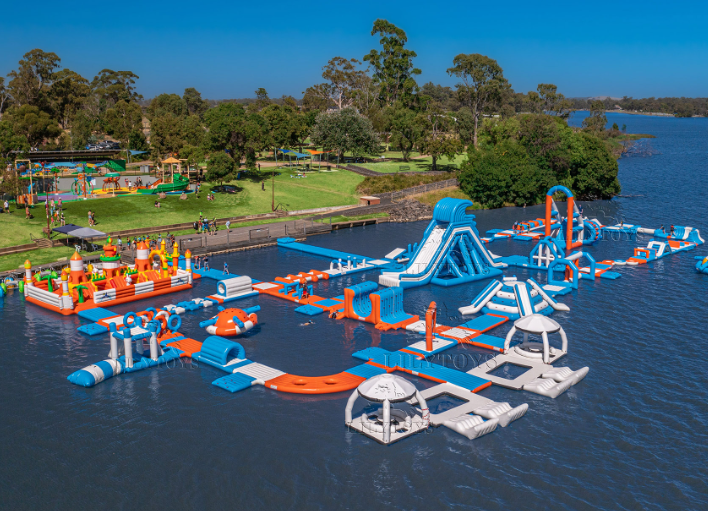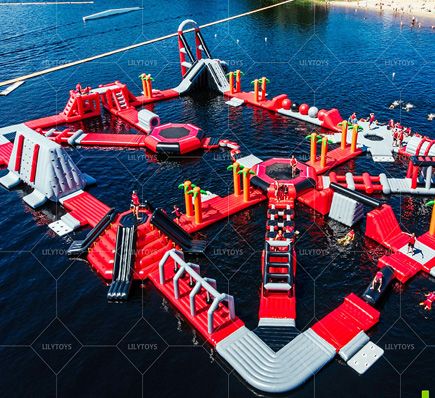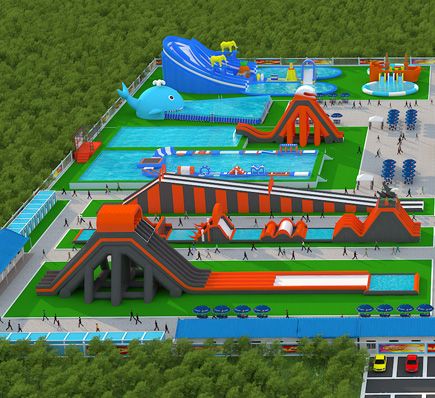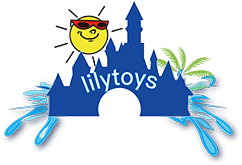Have you ever dreamed of launching your own floating inflatable water park in open water? In this guide, we’ll walk you through every step—from choosing the ideal location to delivering an unforgettable guest experience. With thrilling slides, obstacle courses, trampolines, and more, you can create a sea-bound playground that brings joy, adventure, and a safe splash of fun.

1. Choose the Right Location
Selecting the optimal spot is critical. Aim for:
Calm waters: Minimal waves and low boat traffic enhance safety.
Appropriate depth: Ensure there’s enough clearance below structures—they shouldn’t touch bottom even at low tide.
Accessibility: Easy launch and pickup via docks, boats, or beaches.
Legal compliance: Obtain permits from maritime authorities, local government, and coast guard if required.
Once you’ve pinpointed the location, clearly mark off park boundaries using buoys and signage to alert passing vessels.
2. Choose High-Quality Inflatables
Investing in premium, commercial-grade inflatables is essential:
Durable materials: PVC-coated fabrics and reinforced seams resist UV, abrasion, and saltwater.
Certified designs: Look for inflatables that meet international safety standards.
Specialist suppliers: Companies like Lilytoys specialize in sea-ready inflatables—they offer non-slip surfaces, safety nets, and modular pieces designed for easy assembly and secure mooring.
Quality inflatables not only withstand ocean conditions but also ensure longevity and user confidence.
3. Proper Anchoring & Rigging
A watertight play area demands expert anchoring:
Anchor types: Use heavy-duty screw, concrete, or sand anchors sized to local water depth, wave, and current conditions.
Rigging lines: Use marine-grade ropes or chains with corrosion-resistant hardware (e.g., shackles, quick links) and add shock absorbers to reduce strain.
Setup protocol: Space anchors evenly around the perimeter. Inflate in calm waters, level each module, then secure it firmly. Always follow the manufacturer’s anchoring schematics.
A well-anchored layout ensures participant safety and stability—even when the wind picks up or waves roll in.
4. Prioritize Safety on-site
Safety is non-negotiable:
Designated zones: Create clear swim-in/swim-out pathways, separate entry/exit points, and marked zones for different difficulty levels.
Lifeguards and staff: Certified lifeguards should supervise at all times. Staff must be trained in rescue techniques, first aid, and AED use.
Signage: Post rules in multiple languages—no running, depth alerts, safe distances.
Inflatable safety features: Non-slip walking areas, padded handles, safety nets under slides, and secure platforming help prevent injuries and falls.
Regular staff drills, rescue equipment (buoys, throw ropes), and updated emergency plans are essential.
5. Maintenance & Inspection
A clean, safe park lasts longer and attracts repeat visitors:
Daily checks: Inspect seams, air pressure, anchors, and hoses each morning before guests arrive.
Weekly deep-cleaning: Rinse with fresh water, wipe down surfaces using marine-safe detergent, and inspect for punctures or salt buildup.
Seasonal overhauls: Deflate sections, inspect thoroughly, patch any damage, and replace worn components like valves or straps.
Recordkeeping: Maintain logs of inspection dates, repairs, and usage hours to demonstrate due diligence and support safety compliance.
A proactive maintenance regimen keeps everything afloat—literally and reputation-wise.
6. Enhance the Guest Experience
Turning a park into a full-day destination means thinking beyond slides:
Comfort amenities: Provide changing rooms, shade canopies or cabins, secured lockers, and freshwater rinse areas.
Food & beverage: Offer snacks, hydration stations, or partner with local food vendors for refreshing treats.
Add-on rentals: Paddleboards, snorkels, floating mats, or lifejacket locker systems boost both fun and revenue.
Events & themes: Host early-morning yoga, fitness obstacle challenges, or evening glow nights to diversify appeal.
Online booking & safety briefing: Use a web or app platform for reservations, assign time slots for safety orientation, and collect waivers digitally.
Small touches—like upbeat music, clear signage, and friendly staff—make a huge difference in guest satisfaction.
7. Promote & Expand
Once operational, craft a strong brand:
Social media & reviews: Share high-energy content—videos of splashing slides, fun snaps, glowing testimonials.
Partnerships: Work with nearby hotels, tour companies, or resorts to offer exclusive access to their guests.
Seasonal promotions: Offer early-bird deals, family packages, or group rates for corporate outings and birthday parties.
Feedback loops: Survey guests regularly to find opportunities for improvement and add new features—like a zipline entry, inflatable watersplash station, or kids’ play zone.
Final Take
Building an inflatable sea water park takes vision, planning, and attention to safety—but delivers incredible returns in smiles and memories. By choosing the right location, investing in tough inflatables, anchoring with care, maintaining diligently, and prioritizing the guest experience, you can launch a floating seaside playground that stands out.
With dependable suppliers (like Lilytoys), a trained and enthusiastic team, and a solid operational strategy, your floating water park can become the highlight of the season—where sun, sea, and smiles meet endless adventure.





